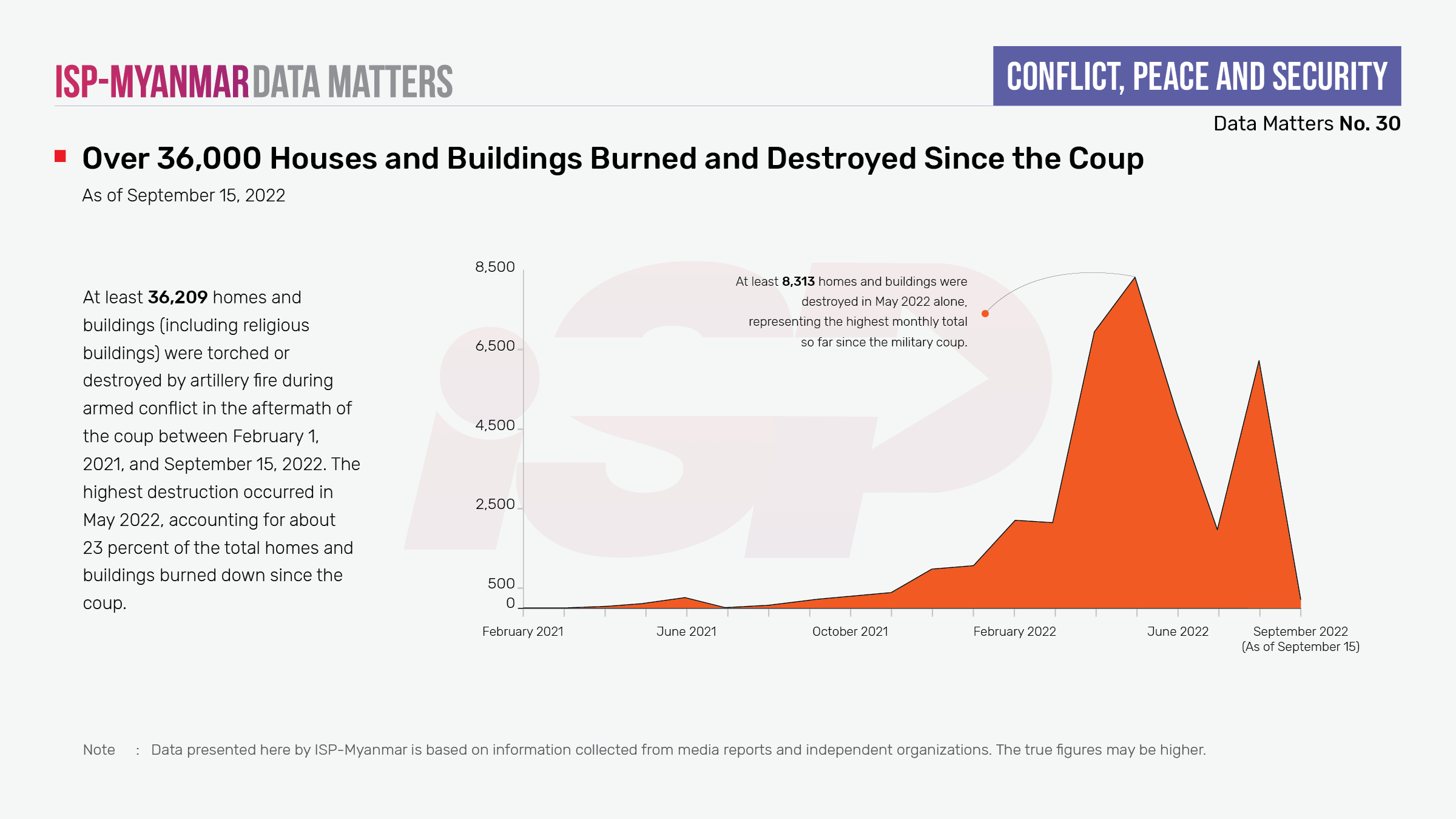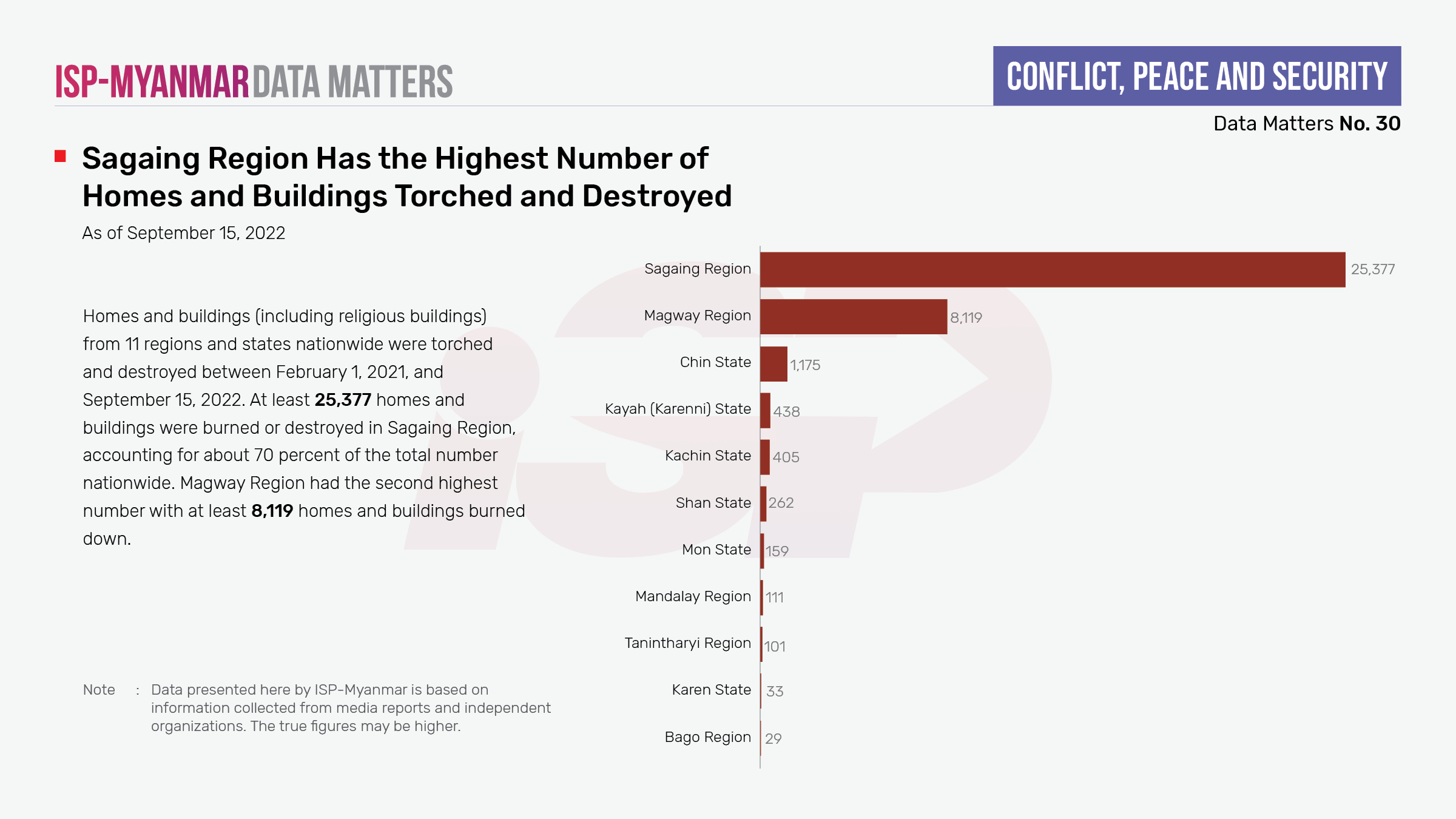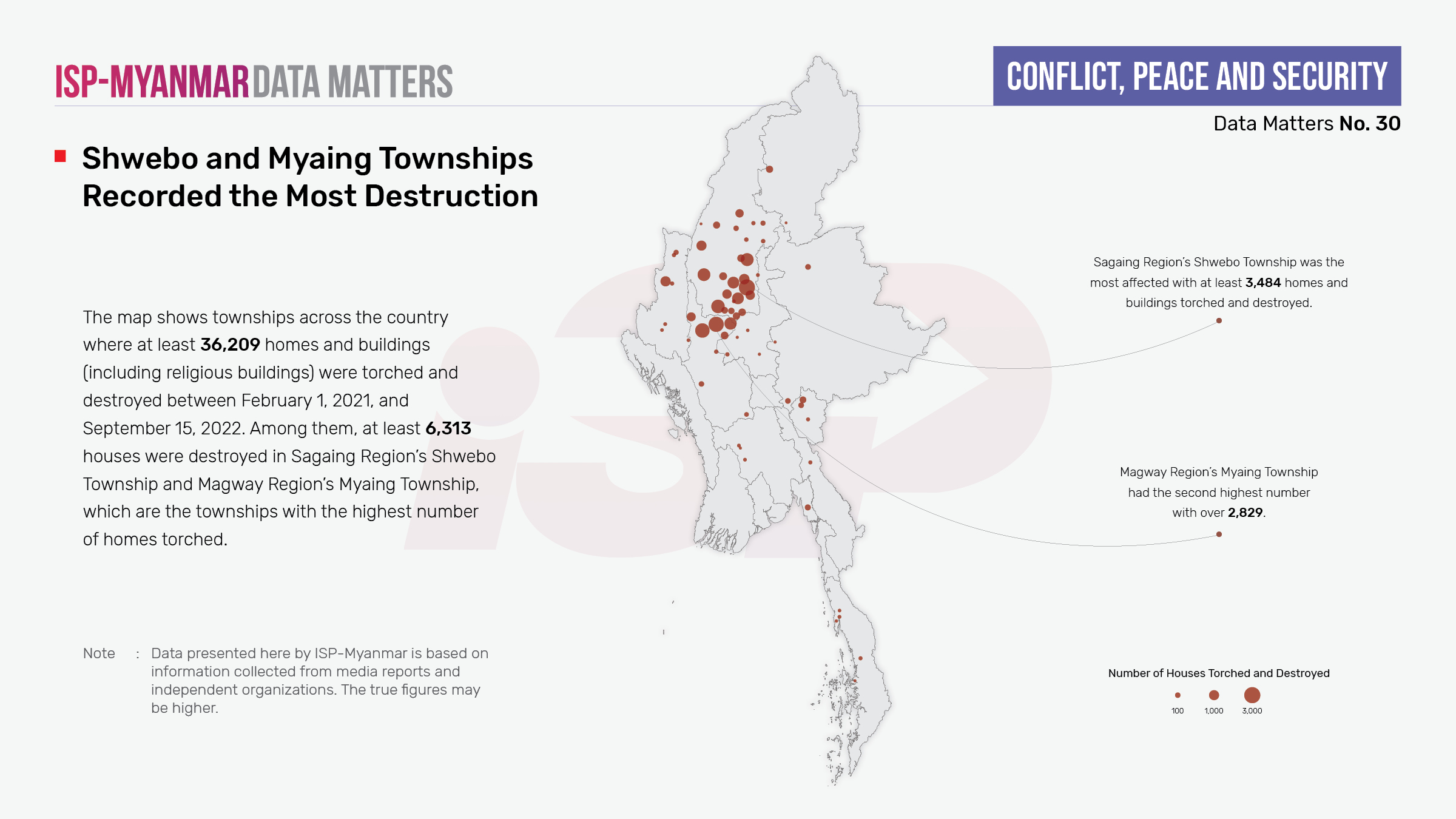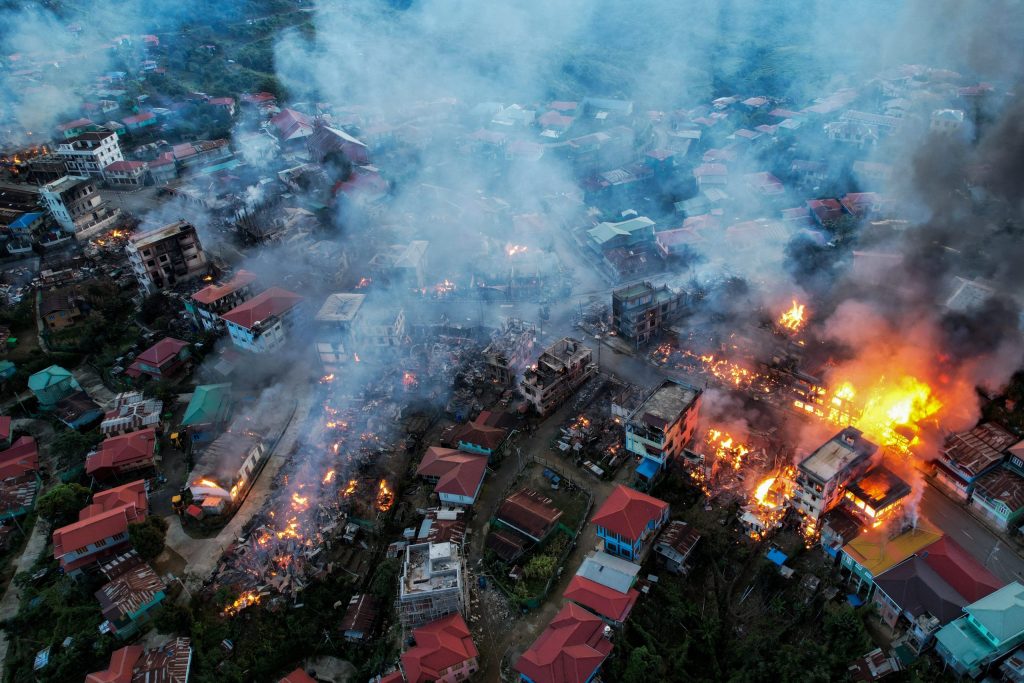Data Matters No. 30




At least 36,209 homes and buildings (including religious buildings) were torched or destroyed by artillery fire between February 1, 2021, and September 15, 2022. At least 8,313 homes and buildings were destroyed in May 2022 alone, representing the highest monthly total so far since the military coup.
In Sagaing Region, at least 25,377 homes and buildings were destroyed, accounting for about 70 percent of the total number nationwide and representing the highest number. Magway Region had the second-highest number at 8,119. Among individual townships, Shwebo Township in Sagaing Region saw the worst destruction with at least 3,484 homes and buildings burned, and Myaing Township in Magway Region had the second-highest total with at least 2,829.
In August 2022, at least 6,221 homes and buildings were burned down across Myanmar. Of these, villages in Sagaing Region, Magway Region, and Kachin State suffered the most arson attacks. At least 10 villages lost 100 or more homes and buildings each. Kapine-Thee Kone village in Sagaing Region’s Yinmabin Township had at least 1,400 homes and buildings burnt, the most damage in a single village in August.
∎ Why does it matter?
By studying the post-coup situation, further research can be conducted to examine whether there has been a change in conditions related to Myanmar’s peace process. In addition, by looking at the number of civilian fatalities and injuries, how they were killed and wounded, and the number of people displaced by fighting, it is possible to examine whether or not armed forces have committed human rights violations from the perspective of transitional justice.
∎ Other relevant readings
On-the-ground reports from ethnic news organizations and other independent media groups provide regular updates about conflict situations, their impact, and the collateral damage in the aftermath of the military coup. These include reports of civilian fatalities, houses torched, and rising refugee and IDP issues on the ground. In addition, records and reports by United Nations organizations such as the United Nations Office for the Coordination of Humanitarian Affairs (UNOCHA), and other independent local and foreign organizations also provide information about the ongoing conflict situation in Myanmar.

